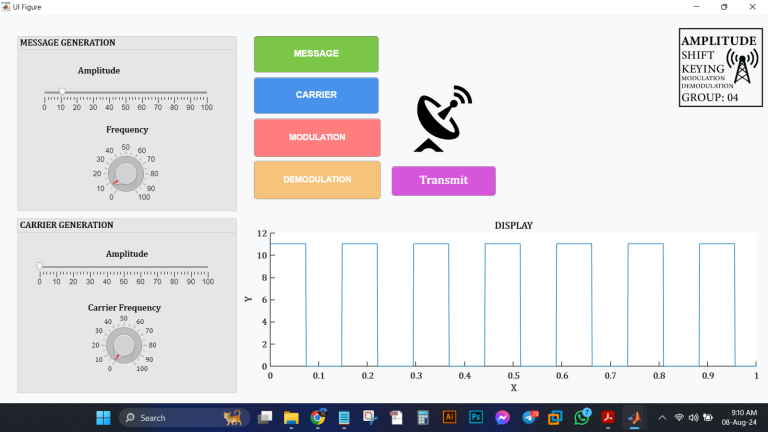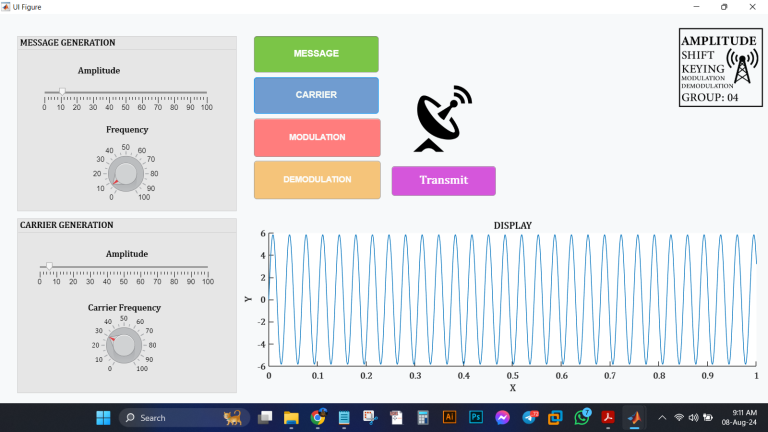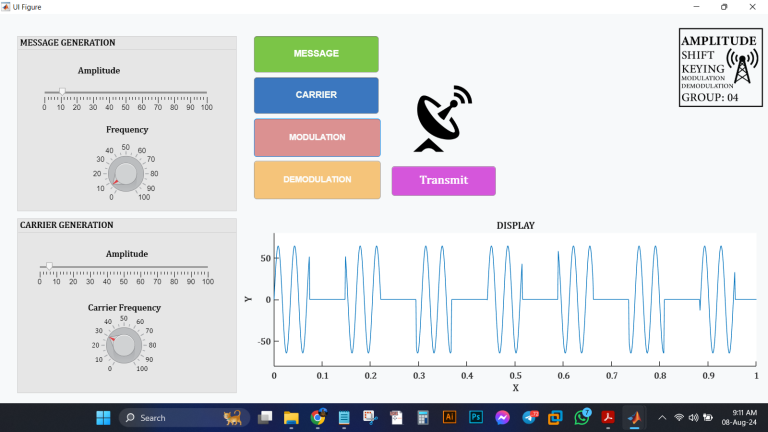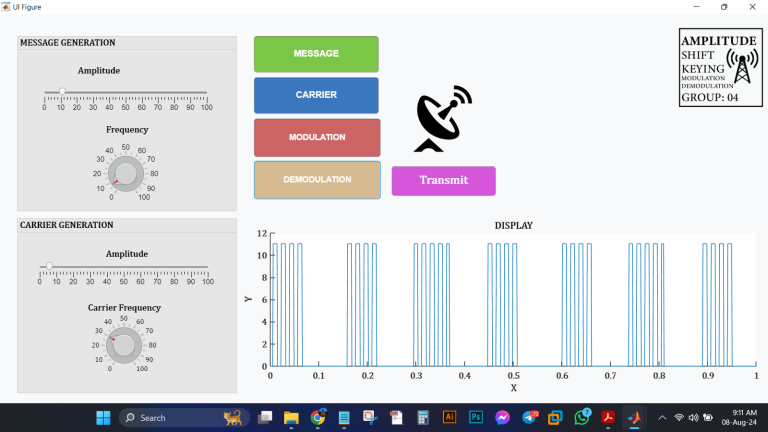Binary Amplitude Shift Keying Modulation Demodulation
The project provides a comprehensive study of Binary Amplitude Shift Keying (BASK), a digital modulation technique that represents binary data by varying the amplitude of a carrier wave. BASK is a subset of Amplitude Shift Keying (ASK), where the amplitude of the carrier signal switches between two levels depending on the binary input—either representing a ‘0’ or a ‘1’. This technique is essential in digital communications, particularly for its simplicity and ease of implementation.
The project starts by explaining the basic principles of ASK and BASK, highlighting how BASK modulates the amplitude of a carrier wave in response to binary data. The modulation process involves creating a signal that has distinct amplitude levels corresponding to the binary values in the data stream. The amplitude remains constant for each binary digit, while the frequency and phase of the carrier wave do not change.
A significant portion of the project is dedicated to the practical implementation of BASK using MATLAB, where mathematical models and graphical representations are employed to simulate the BASK modulation process. The study investigates the performance of BASK across different communication scenarios, focusing on its efficiency and robustness. By simulating various modulation parameters, the report analyzes how BASK can be optimized for reliable data transmission, even in challenging environments.
The project also delves into the practical applications of BASK in various domains. BASK is commonly used in wireless communication systems, where it facilitates the transmission of digital data over radio frequencies. This technique is particularly useful in Radio Frequency Identification (RFID) systems, where it helps transmit data between RFID tags and readers. BASK is also utilized in optical communication systems, such as visible light communication (VLC), where data is transmitted by modulating the intensity of light-emitting diodes (LEDs). Other applications include industrial control systems, where BASK is employed for data transmission in harsh environments, and consumer electronics, where it is used in devices like TV remote controls and infrared communication systems.
In addition to its applications, the project discusses the advantages of BASK, including its straightforward generation and detection processes. The simplicity of the BASK circuitry makes it an attractive choice for low-complexity systems. However, the project also notes the limitations of BASK, particularly its sensitivity to noise, which can affect the reliability of data transmission. Due to this sensitivity, BASK is typically used in low-bit-rate applications where the impact of noise is minimized.
The project concludes by reflecting on the overall effectiveness of BASK as a modulation technique, acknowledging its strengths in terms of simplicity and implementation, while also recognizing the challenges posed by noise interference. The study suggests that while BASK is suitable for specific applications, its performance needs to be carefully evaluated against other modulation techniques depending on the requirements of the communication system.
Overall, the project provides a thorough examination of BASK, offering valuable insights into its theoretical foundations, practical applications, and performance characteristics. The findings contribute to a deeper understanding of digital modulation techniques, particularly in the context of modern communication systems.



